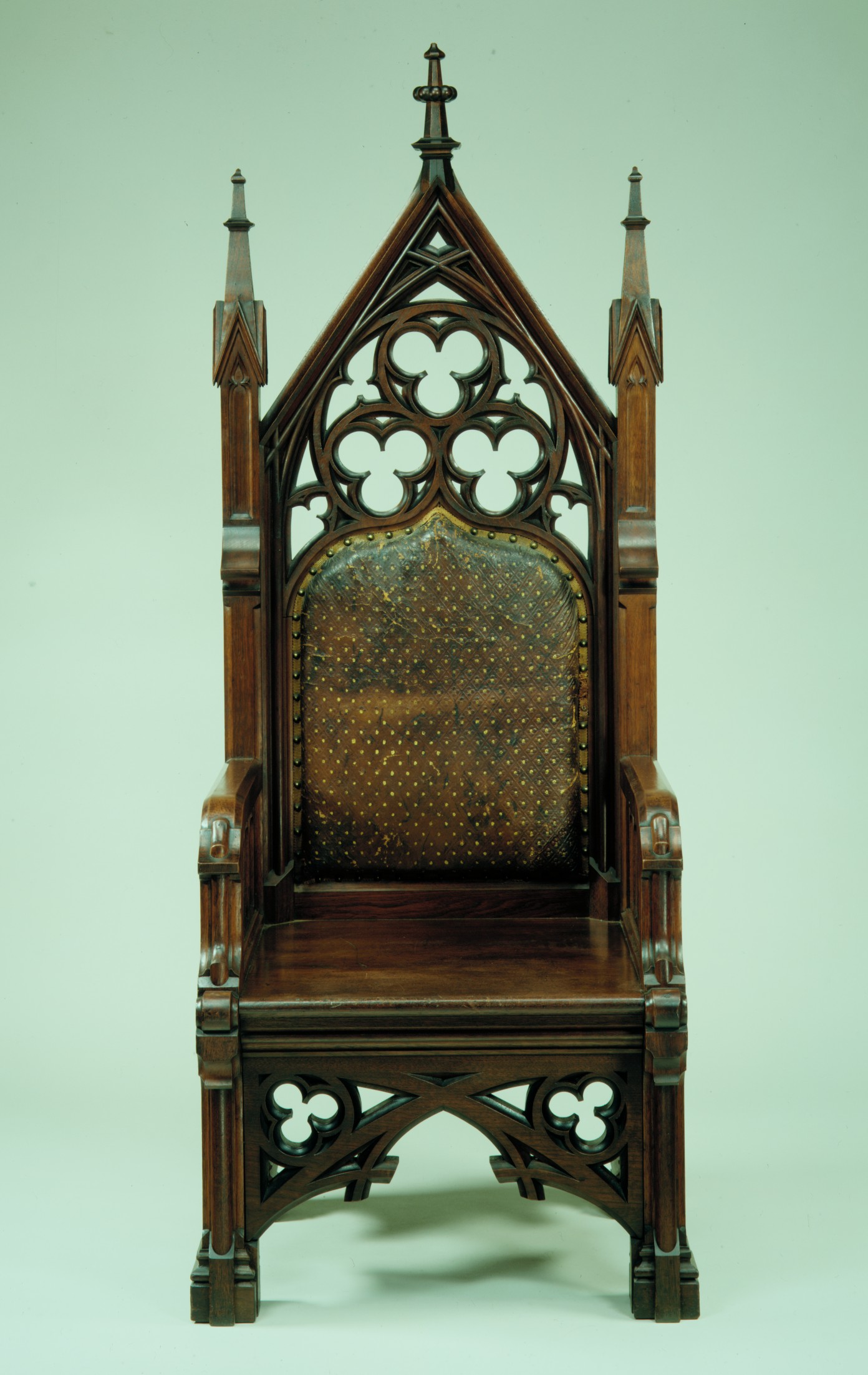Armchair
Possibly Gustave Herter German (Stuttgart, principality of Württemberg)
This stately armchair is thought to have come from Belvoir, a Gothic villa built in the 1850s in Yonkers, New York, for the tobacco merchant Christian H. Lilienthal. It likely was used in the library, a room for which the Gothic style was favored. A period photograph of the library records furniture identified as the work of Gustave Herter, suggesting the German-born craftsman may have created this chair. The pierced-trefoil back, pointed arches, and crockets borrow directly from Gothic architecture. During this period of profound industrial and cultural change, designers and consumers looked to historical styles such as the Gothic to inform new aesthetic sensibilities.
Christian H. Lilienthal was newly wealthy and of Jewish descent. Belvoir, with its impressive castellated exterior and lavish Gothic interior, could be seen as an attempt by the family to gain acceptance to the elite echelons of New York society, using a style favored by its members. Gustave Herter was one of the most highly regarded New York City cabinetmakers from the 1860s to 1880s, and his work certainly would have helped Lilienthal make a statement about his wealth and social standing.
Due to rights restrictions, this image cannot be enlarged, viewed at full screen, or downloaded.
This artwork is meant to be viewed from right to left. Scroll left to view more.





